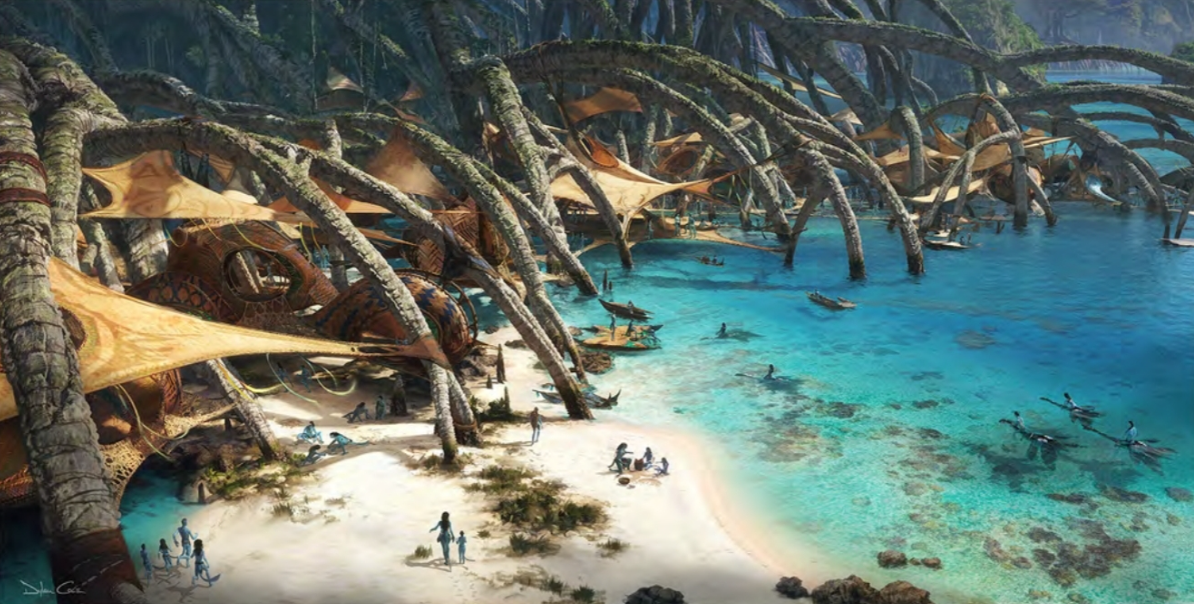
The Metkayina live in multiple villages of marui that hang among the giant roots of mangrove trees. Some Metkayina villages have existed for thousands of years. The main one is called Awa’atlu. Awa’atlu has small docks for canoes, a centralized ilu pen, and communal areas for gathering, eating, and the telling of tales and singing of songs. Tensile woven walkways link all the marui throughout the village.
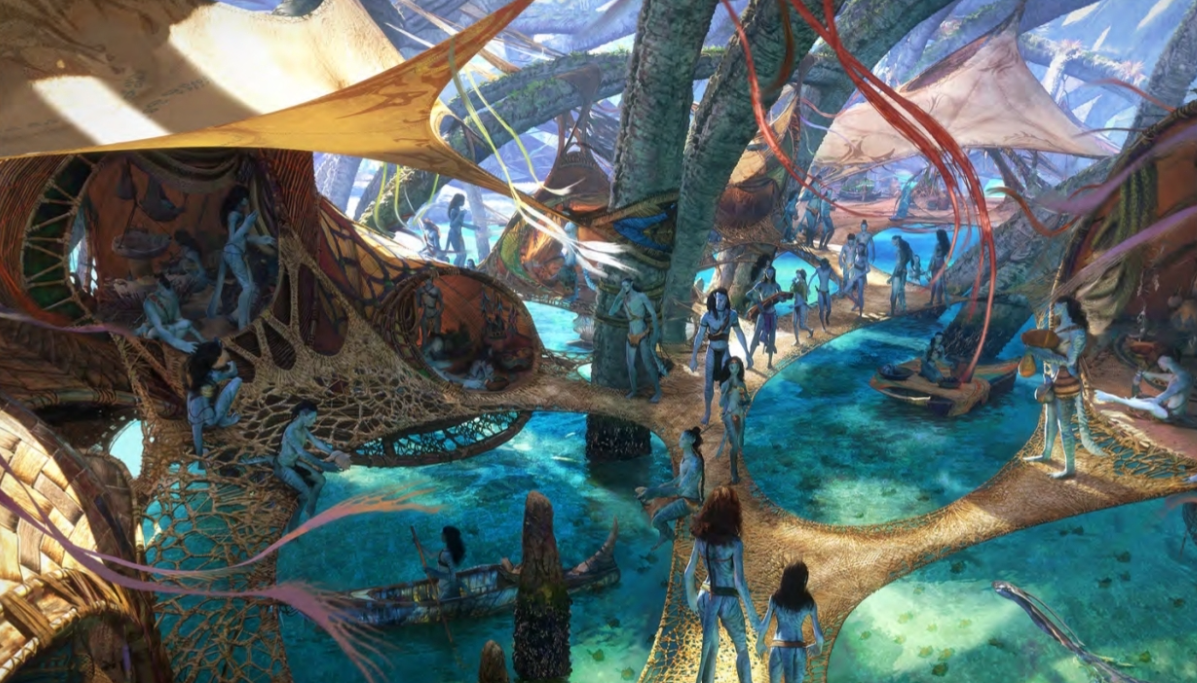
Communal areas are large, open marui.
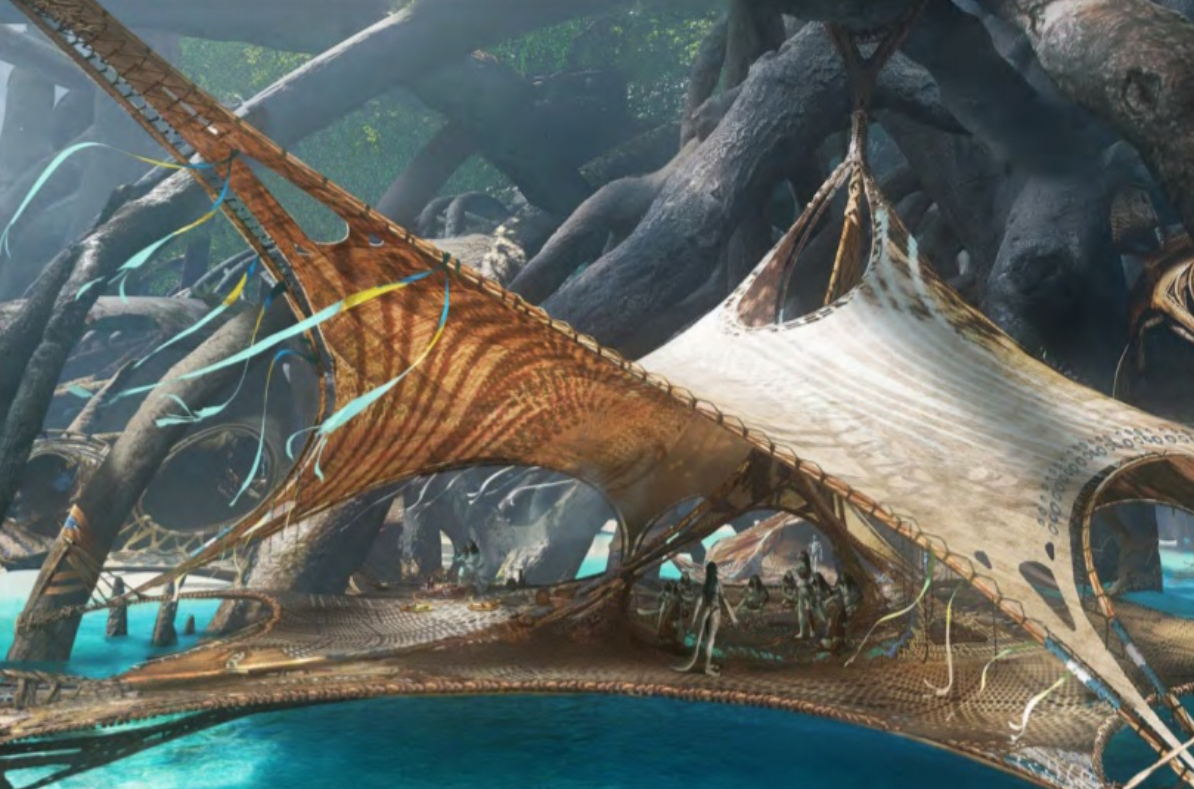
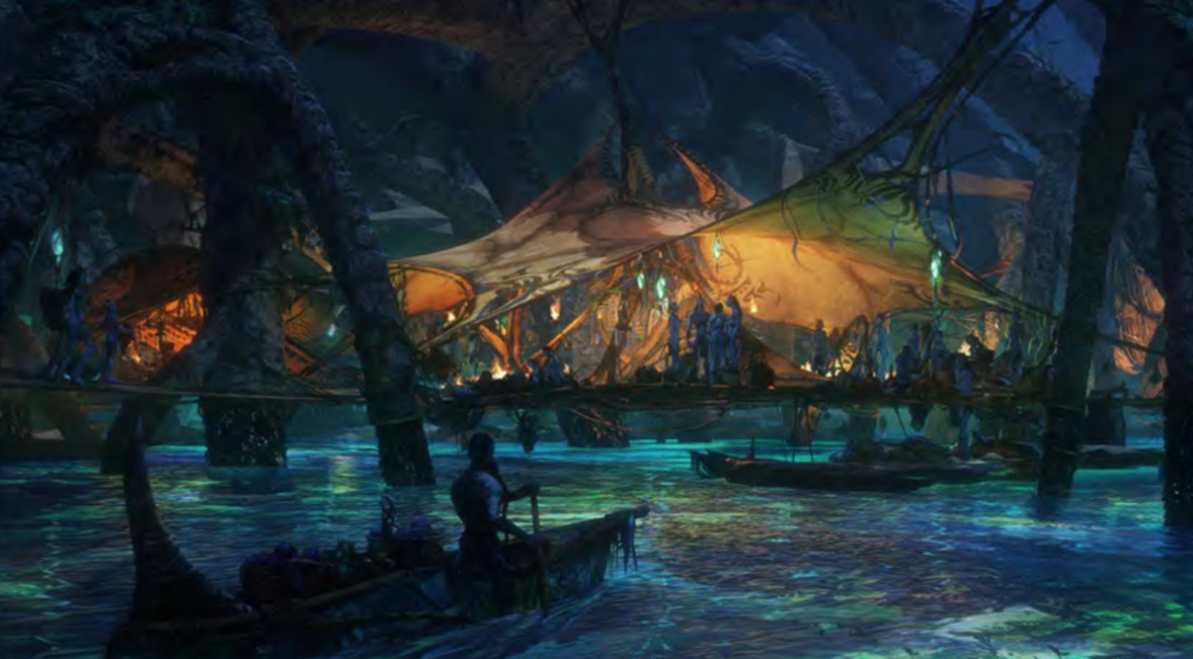
The mangrove trees that make up the foundation for the Metkayina’s villages are on a central island within an atoll, which is just under 300 miles northeast of the Omatikaya’s rainforest. The atoll is a ring shaped seawall approximately 30 miles across. The structure has a number of openings, called ‘passes,’ which allow the tide to flow in and out.
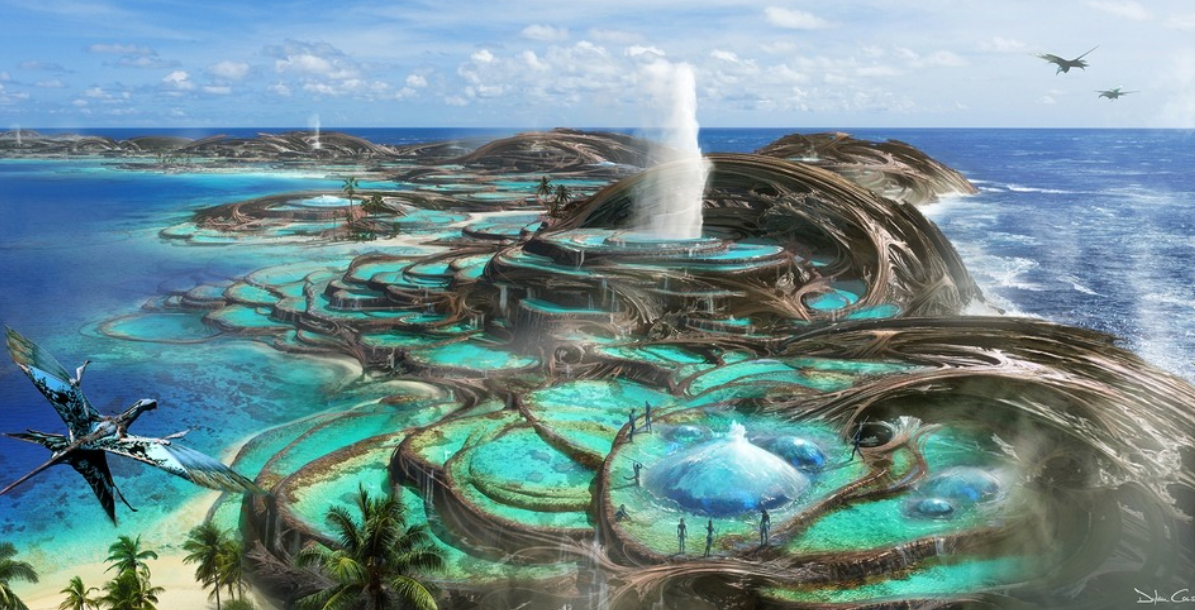
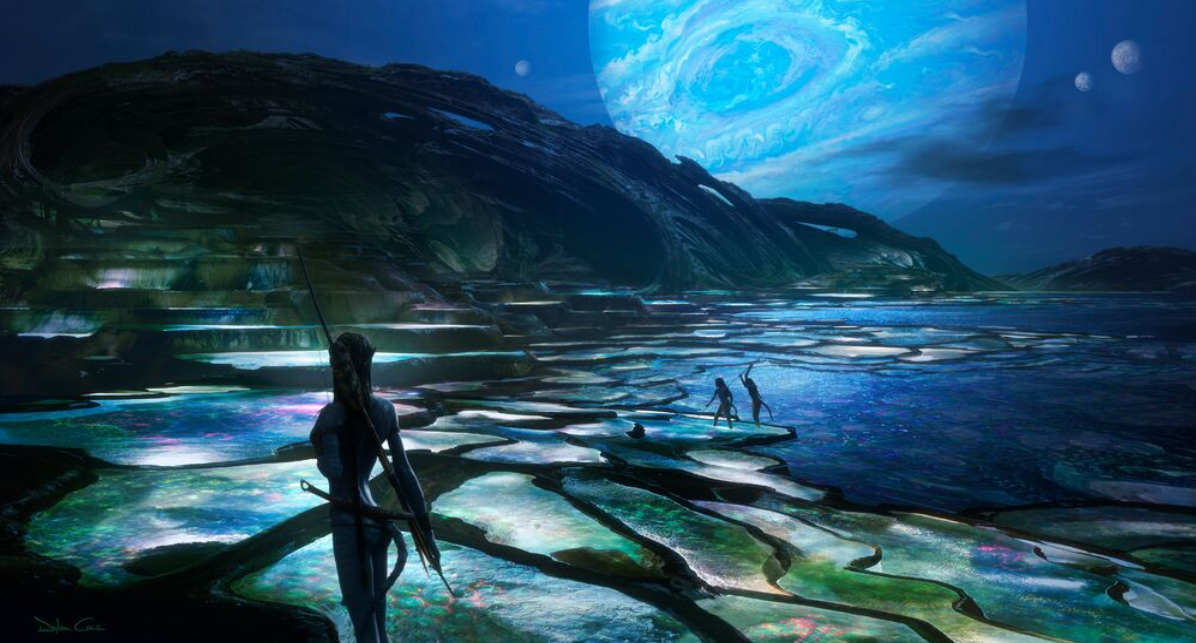
The terraced tide pools are unique to Pandoran reefs. Tunnels lined with powerful invertebrate colonies pump water to the top of the barrier reef, where it wells up in pools and cascades down, forming terraces. This adaptation allows, over millions of years, the corals to grow high above the water-line, quite unlike any coral reefs found on Earth. The upward water flows can bring in unique fishes from the ocean that the Metkayina rarely encounter in the shallows. The Metkayina believe that the seawall was created by Eywa to enclose the lagoon and promote life.